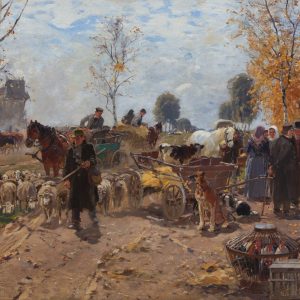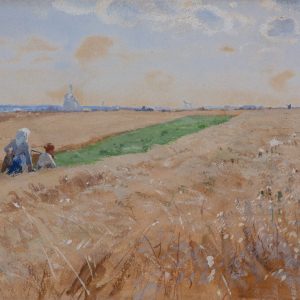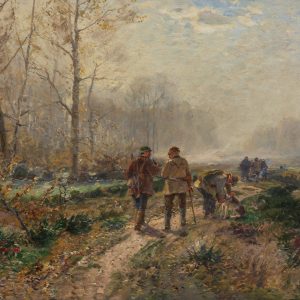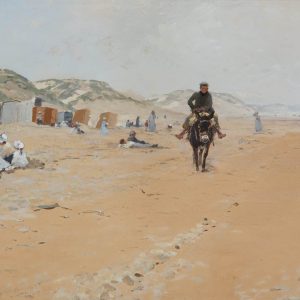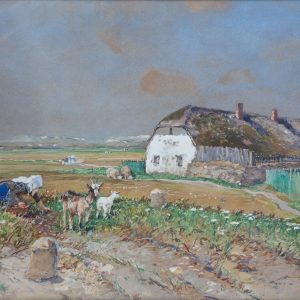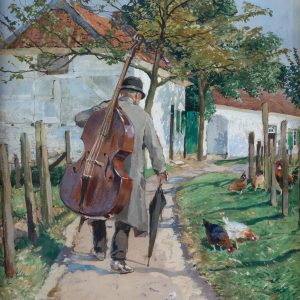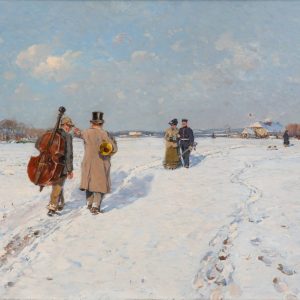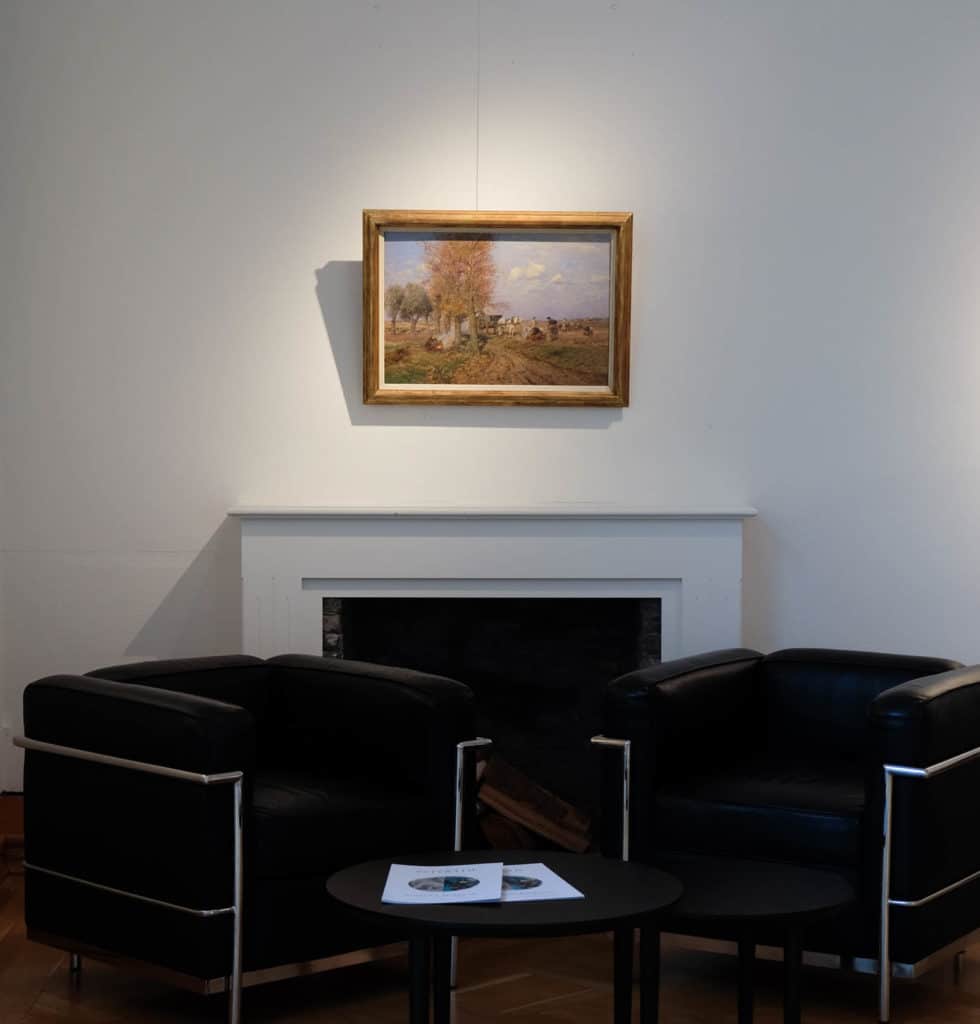
Hugo Mühlig
1854 Dresden ‐ 1929 Düsseldorf
Short information about the artist
Hugo Mühlig himself summarized his early biography in a few words of a letter: “Born in Dresden on November 9th, 1854 as the son of the history painter Meno Mühlig, who is very well known in Dresden. Attended the Dresden Art Academy and was specifically a student of Professor V. P. Mohn, now living in Berlin, who at the time headed the landscape painting studio in place of Professor Ludwig Richter. In 1881 I moved to Düsseldorf … “
Kunstwerke im Angebot
Verkaufte Kunstwerke
Videos about the artist
More information about the artist
Hugo Mühlig himself summarized his early biography in a few words of a letter: “Born in Dresden on November 9th, 1854 as the son of the history painter Meno Mühlig, who is very well known in Dresden. Attended the Dresden Art Academy and was specifically a student of Professor V. P. Mohn, now living in Berlin, who at the time headed the landscape painting studio in place of Professor Ludwig Richter. In 1881 I moved to Düsseldorf … “
Düsseldorf time
Hugo Mühlig is one of the internationally best known representatives of the late Düsseldorf school of painting. In Düsseldorf he found his characteristic style. With his impressionistic, natural motifs in brilliant painting technique, Mühlig had won the favor of collectors from the Rhineland and numerous international ones within a few years. Carl Batzner, a prominent companion from Mühlig’s Willingshauser time, put it in a nutshell: “Mühlig was highly respected both as a person and as an artist. His works can be found in numerous museums. ”(Quote from the memoirs, 1932).
Lower Rhine
His favorite motifs were landscapes in connection with the depiction of the rural population, which he collected on numerous excursions in the Düsseldorf area. His paintings are extremely bright and inspired by a remarkable observation of nature, which turns harvests, winter hunts or autumn walks into comprehensible experiences.
Hunting motifs
“Even more famous than his autumn hunts, however, were his winter hunting pieces, which combine brilliant snow painting with perfect mastery of staffage figures. (…) Above all, it was these who brought the painter in Düsseldorf fame and prosperity. ”(Dirk Kocks:“ Weltkunst ”, February 15, 1983, p. 387) Collectors’ preferences of past decades, when Mühlig’s winter landscapes were already among the much admired gems at art exhibitions in Berlin, Dresden, Düsseldorf and Munich. Hugo Mühlig knew the driven hunts on the Lower Rhine firsthand. He often accompanied the hunting parties for a whole day in order to be able to convey an authentic picture of what was happening despite the freezing cold.
Museums and collections
The appreciation of Hugo Mühlig’s works has grown steadily over the past decades. A few years ago he was recognized in the press as the “secret star of the art market”. His early major works were mainly sold to England and America. Today most of his oeuvre is in private hands. Today, works by Hugo Mühlig can not only be found in numerous private collections, but also in various museums in Germany, such as the Nationalgalerie Berlin, the Kunstmuseum Düsseldorf, the Gemäldegalerie Neue Meister in Dresden, the state and municipal art collections (Neue Galerie) in Kassel and the Wallraf-Richartz-Museum in Cologne.
Literature
Unfortunately the book “Hugo Mühlig (1854 Dresden – Düsseldorf 1929)” is out of print.
